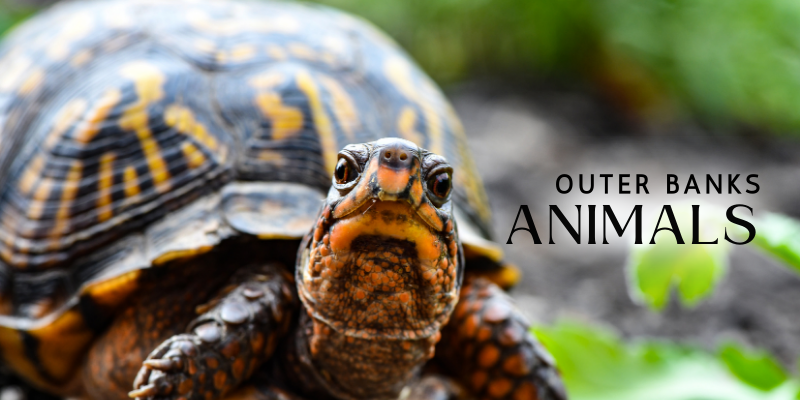
The Outer Banks is not only known for being an amazing vacation destination, but its unique climate and varied ecosystems create the perfect habitat for a wide variety of wildlife. People come from all over the world to catch a glimpse of the Corolla Wild Horses or the plentiful bird species that spend time on the Outer Banks, while the multiple maritime forests found throughout the region make these barrier islands an animal-lovers paradise.
And while a trip to the NC Aquarium is sure to give you a chance to observe lots of native wildlife, you'll also probably get the chance to see many different types of animals in their natural habitats during your stay. Here is a list of some of the most recognizable animals, from mammals to reptiles, that you're more than likely to see during your next visit to the Outer Banks. Just be sure to keep your distance and feel free to take pictures, but remember that no matter how cute they are, these are wild animals and it's usually best to leave them alone.
Outer Banks Mammals
According to National Geographic, "mammals include humans and all other animals that are warm-blooded vertebrates (vertebrates have backbones) with hair." Here are some of the more popular mammals you'll see on the Outer Banks, with most of them primarily coming out at night to play after the humans have gone to bed.
Raccoon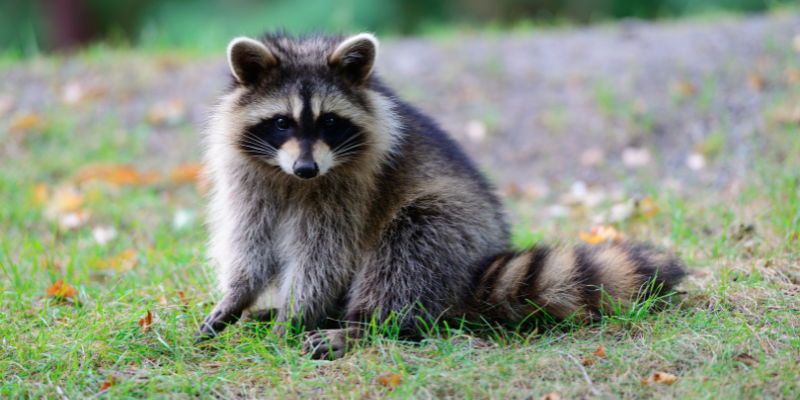
For most people, raccoons aren’t entirely unfamiliar animals and you will more than likely find these sneaky little creatures exploring trash cans and maritime forests on the Outer Banks. These masked, feline animals primarily come out at night and can be seen rummaging through trash cans, looking for pet food left outside, or scavenging for bird eggs, frogs, and other possible natural delicacies.
While these little guys tend to be adorable, it’s important NOT to interact with them. If they feel cornered, they can and will attack humans and they are also known for the potential to carry rabies, a rare but potentially fatal disease. You can prevent raccoons from interfering with your vacation by keeping trashcans sealed and bringing in all food (including pet food) at the end of the day.
Opossum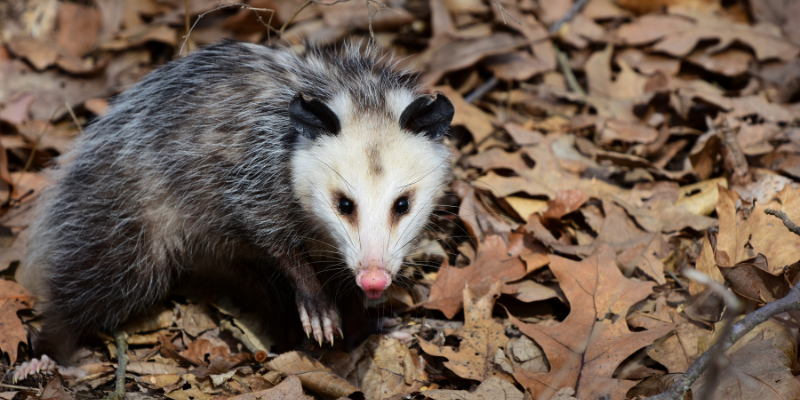
Despite their negative reputation, opossums are actually important nocturnal animals for the Outer Banks environment. These little guys primarily eat ticks and other annoying pests that we’d prefer to live without. They’re opportunistic feeders, meaning that they’ll also be digging into open trash cans and pet food when available, though they spend most of their time in trees or in their nests underground. They prefer not to fight - hence the violent hissing and scary face - but will “play dead” if threatened. It’s best to keep your distance if you happen to see an opossum during your stay and just let them keep eating the ticks and other bugs that would otherwise dampen your vacation fun.
Red Fox
The Red Fox is one of the more common nocturnal animals that you might see during your stay on the Outer Banks. These foxes are known for their bright red or rust-colored fur and they can be seen hunting for insects, birds, eggs, and fruit throughout the year. They tend to be shy and non-aggressive, but it is still important to give them their space if you see them in the wild. Like many of the animals on this list, their nocturnal nature means that it’s important to drive carefully at night to avoid hitting them on the highways and roadways, especially if you’re driving near swamps, marshes, or a maritime forest.
White-Tailed Deer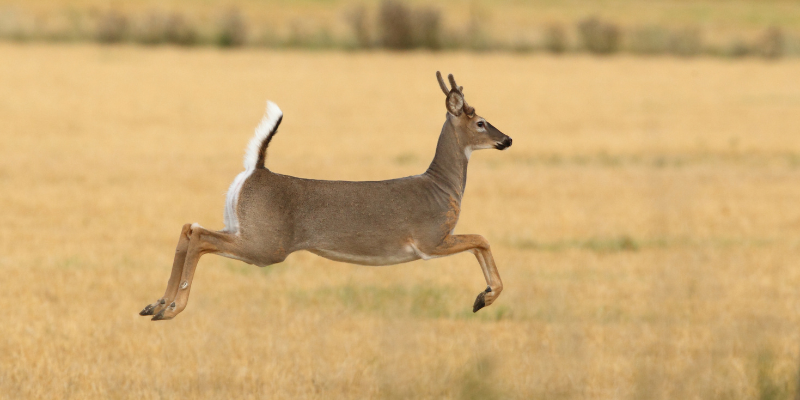
White-Tailed Deer are one of the more common animals that you’re likely to see on the Outer Banks, especially during dawn and dusk. They’re known for their tan or brown coat with white patches on their neck and ears. These deer have few natural predators on the Outer Banks, so hunting is allowed in certain areas of the Outer Banks at certain times of the year.
For the most part, you may end up seeing white-tailed deer as you're driving along the road in the evenings or early mornings or in fields the closer it gets to sunset. Like all the animals on this list, it’s best to enjoy them from a distance, taking photos but not getting too close.
Marsh Rabbit
Marsh Rabbits can occasionally be seen during the day, but they mostly move around at night, so they’ve found a spot on our list of nocturnal animals. These rabbits are medium-sized with dark brown fur and are only found around marshes and wetlands in the eastern part of North Carolina. They primarily eat roots and bulbs but will also eat twigs and bark when necessary. Marsh Rabbits tend to be reclusive, spending the day hiding out in clumps of grass and brush in remote areas.
Coyote 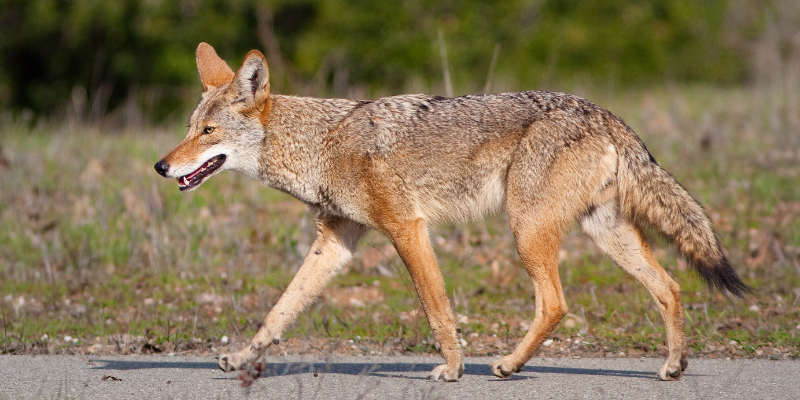
While it may be surprising, coyotes are actually extremely prevalent on the Outer Banks, especially during the fall when the pups leave the den and begin exploring. Coyotes tend to look like mid-sized dogs and howl like wolves. Attacks on humans are extremely rare, though they will sometimes prey on pets if left outdoors at night. To avoid conflicts with these unique, adaptive, and fascinating animals, just be sure to secure trash cans, bring pets inside at night, and keep your distance - though they may look like dogs, definitely don’t try feeding coyotes treats.
Outer Banks Reptiles
When you visit the NC Aquarium, one of the highlights of the trip is sure to be the abundance of reptiles and amphibians that the aquarium has to offer. However, there's a reason these cold-blooded creatures are one of the aquarium's important features. There are many different species of reptiles and amphibians that call the Outer Banks home and there's a good chance you'll see quite a few of them during your stay. Here's a list of some of the most notable reptilian residents of the Outer Banks.
American Alligator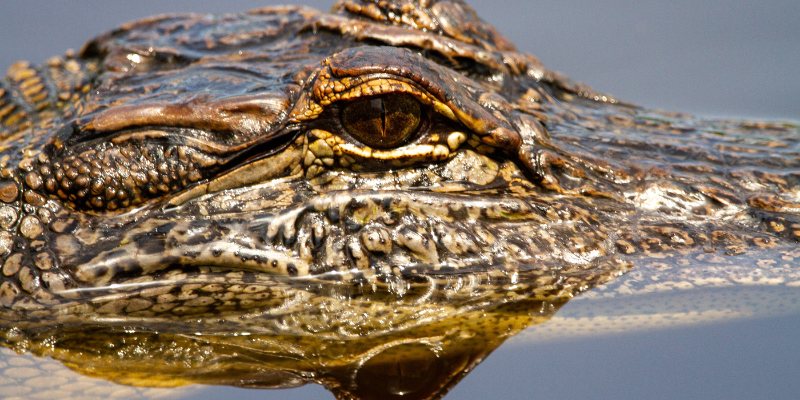
While you're not very likely to see one of these guys roaming the streets of Kitty Hawk, the Alligator River Wildlife Refuge on the mainland Outer Banks and other surrounding marshy areas and wetland habitats do attract the American Alligator. These creatures prefer brackish water, so you may see them if you're taking a kayaking tour around Roanoke Island or exploring the refuge. The American Alligator isn't something you'll see frequently but when you don't, they're not hard to miss. These large reptiles can grow up to 12 feet in length! But don't expect to see crocodiles outside of the aquarium; those don't typically call the area home.
Turtles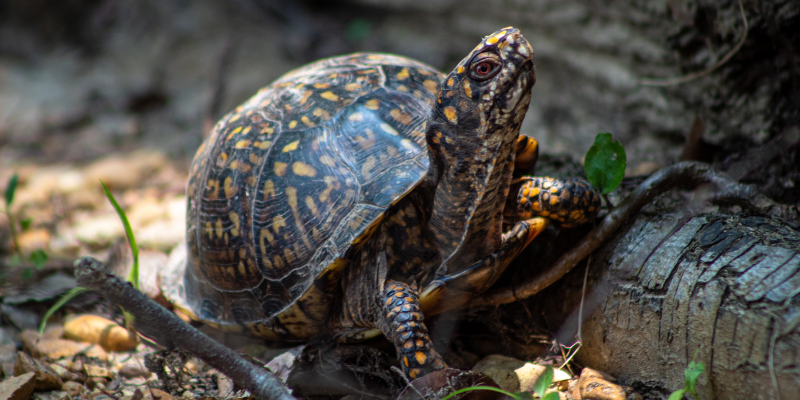
In addition to sea turtles that use our beaches for nesting, the Outer Banks is also home to a wide variety of terrestrial turtles who spend much of their time on dry land but can be seen near ponds, sounds, and other shallow bodies of water on the OBX. Various species of freshwater turtles will be staying alongside you during your Outer Banks vacation including yellow-bellied sliders, diamondback terrapin, box turtles, and common snapping turtles which are known for their impressive mouths and claws.
Snakes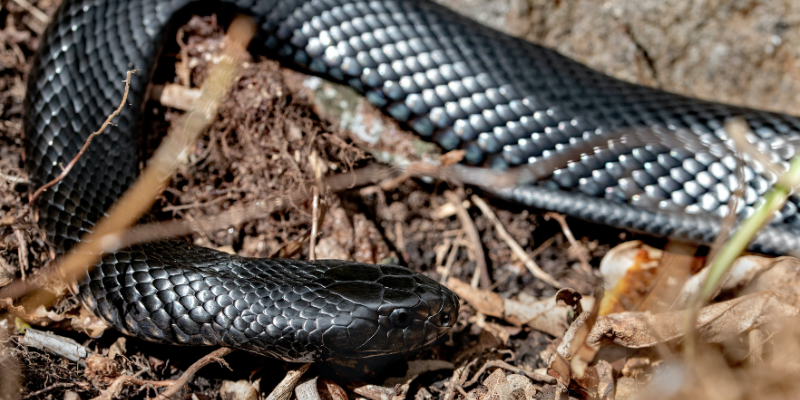
A variety of snake species make up a majority of the wildlife diversity on the Outer Banks. Especially if you take a journey through Nags Head Woods, you may see a Black Snake, which is not poisnous and is an important part of the local ecosystem, helping keep the rodent population down. Cottonmouths and Copperheads are a little more dangerous, with venmous bites that usually come out only when provoked. So leaves these snakes to do their duty in the ecosystem and just step away when you see them.
Lizards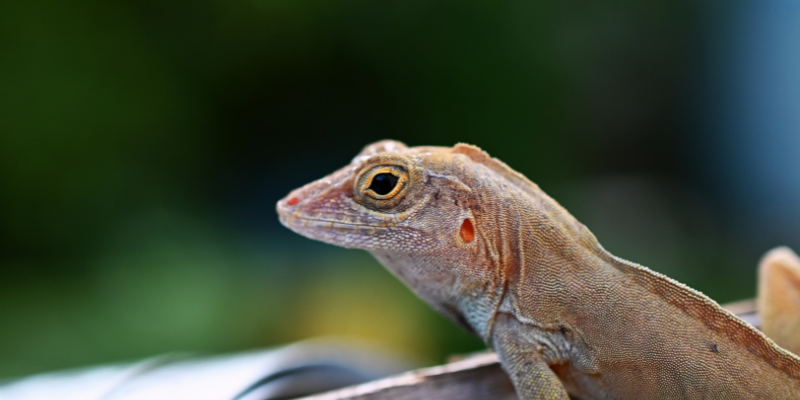
There are quite a few different species of lizards here on the Outer Banks, though maybe not as many as you would expect. The primary lizard-folk on the OBX are a variety of North Carolina native anoles and skinks, which are indigenous in many area of the south. You'll most likely see green anoles and fence lizards in trees or on the sides of buldings while skinks make their home in the woods, wetlands, and even the beach near the dunes.
BOOK A VACATION RENTAL FOR YOUR NEXT NATURE ADVENTURE
For even more information fun, check out our guide to Common Types of Outer Banks Pests for more detailed information about these creepy critters and steps you can take to keep them from ruining your vacation! And be sure to plan your next Outer Banks vacation with our Outer Banks Trip Planner for Nature Enthusiasts and the annual double-feature Wings Over Water Wildlife Festival! And when you're ready to find somewhere awesome to stay, we have beautiful and comfortable Outer Banks vacation rental homes available from Corolla all the way down to South Nags Head, which sits just a short drive from the Cape Hatteras National Seashore and plentiful wildlife-spotting opportunities.
Give our wonderful Guest Services Team a call today at (866) 884-0267 or take a look at our available rentals to get started planning your next historic adventure to the Outer Banks. And don't forget about our layaway plan, which makes booking your dream vacation easier than ever. So don't wait. We're booking Outer Banks vacation rentals year round and we're excited to help you create memories to last a lifetime. We're here to help make your OBX vacation fun, exciting, and hassle-free. Give us a call today! Be sure to provide accurate information and make any necessary payments.
Explore our website and give us a call to help kick-start your unforgettable Outer Banks vacation today. Be sure to follow us on Facebook, Instagram, YouTube, Pinterest, and TikTok to stay up to date on all of our specials, new & featured homes, and tips & tricks for making the most of your next Outer Banks vacation.
We’ll see you at the beach.
Last updated Tue, Jul. 18, 2:30PM EST.


About the Author: Lauren is an Outer Banks local, mom, trained historian, and travel enthusiast. When she isn’t writing for the Seaside Vacations Travel Blog, Lauren can usually be found with her nose in a book or cuddling with her cats.



